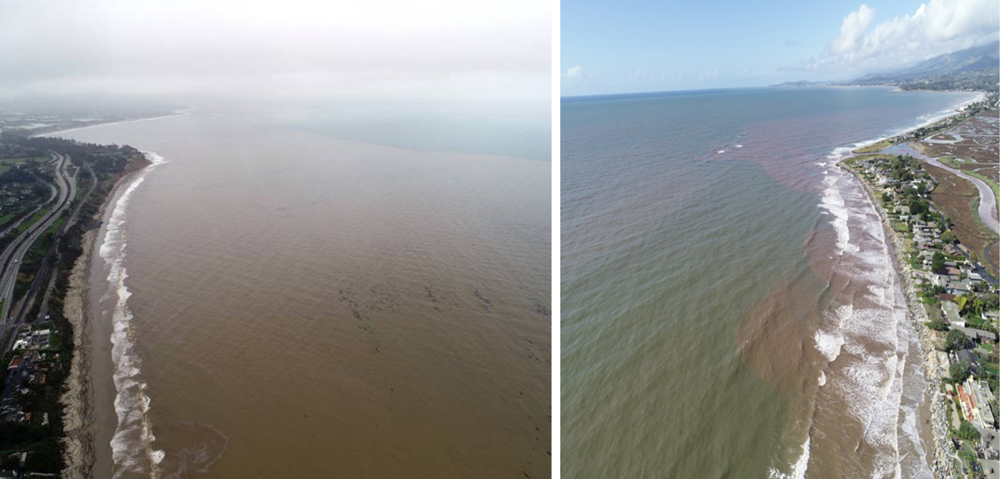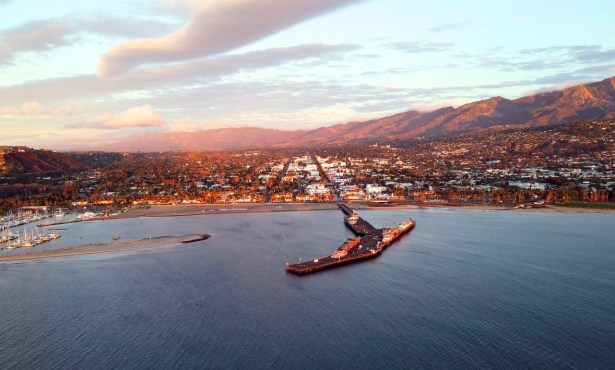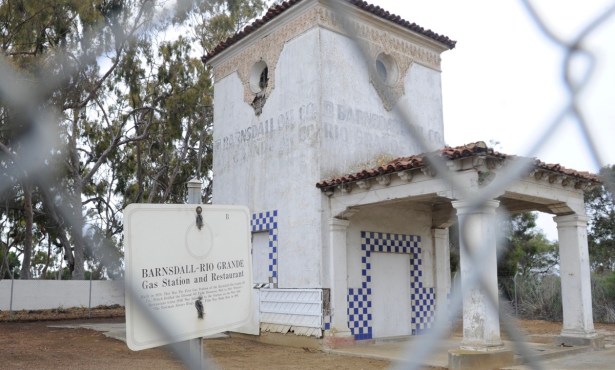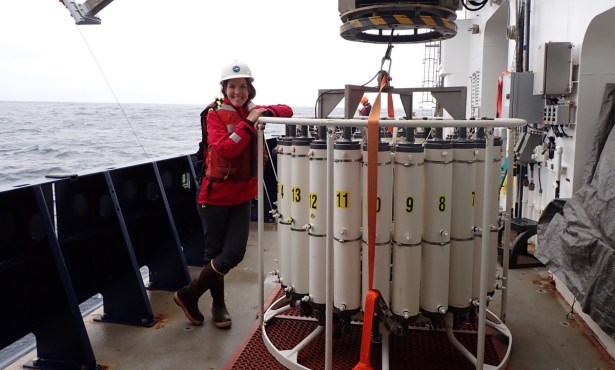Thomas Fire Debris Trucked from Basin to Beach
A Year After 280,000-Acre Fire, Mud and Boulders Abound
Since the rainy season began in earnest in January, County Flood Control has been operating almost constantly to keep its debris basins clear and ready for the next onslaught. Much of the accumulating debris is due to 2017’s Thomas Fire, which burned more than 280,000 acres in the back- and front-country behind Montecito, Carpinteria, and the western part of Ventura County. The scant vegetation on the hillsides has caused loose mud and rock to pour into the 11 debris basins below the burn scars when even a relatively small amount of rain has fallen. Trucks have been moving the stuff to Buellton, Santa Paula, and a closed landfill near the bridge to nowhere off Foothill Road. On February 4, the county began trucking the debris to Carpinteria. The city’s Parks & Rec director Matt Roberts welcomes the mud and stone as they help produce the sand his beaches need.
The story is different at Goleta Beach Park. Though no public outcry has arisen — yet — as it did last year, Santa Barbara Channelkeeper has been talking with county officials about a better way to handle emergency dumping. Debris dumping will be an annual event until the vegetation grows back several years from now across the thousands of acres. “The county is relying on the waves and ocean to do the sorting the creeks would normally do,” said Ben Pitterle, the science director for Channelkeeper. “Right now we can’t say with certainty what all the impacts are because they’re not being evaluated.” He pointed out that grunion will be running within a few weeks and that they spawn in sand, not rock or mud. “A properly permitted program would look at impacts on water quality, bacteria, turbidity,” Pitterle gave as examples.
Coastal marine ecologist Jenny Dugan can see Goleta Beach from her office window above the bluffs at UCSB. Not only will grunion run soon, she said, but spring is when the larval forms of tidepool creatures customarily surf in from their winter homes in the ocean and begin to grow in the rocky tidal zone. If the murky water offshore remains till then, it could interfere with their success, which is critical to the shorebirds who feed on them.
Dugan noted that the county was limiting its footprint at Goleta Beach — as it is in Carpinteria — which is a positive approach. The proximity of parking lot and road to each beach, respectively, makes it easy to limit truck and bulldozer traffic over the beach to one spot. When sand dredged from Santa Barbara Harbor has been added to Goleta Beach in years past, it was a definite benefit to the beach, she said. It’s more “nourishing” than the debris currently being dumped, which isn’t entirely made of sand. The years of drought have also taken a toll on the beach’s sand level; “Poor Goleta Beach,” Dugan said at one point, adding that the good rains this year would push sand down the longshore transport system from Devereux and Coal Oil Point, though it can take years to spill around Campus Point to Goleta Beach.
As a parade of trucks came and went from the beach, a vacuum sweeper truck valiantly patrolled the parking lot, cleaning up the accumulating dusty dirt. Sweepers and water trucks are also keeping residential streets clean near Carpinteria’s Ash Avenue dump site. More sweepers are active in the foothills on the approaches to the debris basins, where trucks are being filled at a rate of one every couple of minutes.
The county’s emergency disposal permit was issued with the concurrence of the California Coastal Commission, the Army Corps of Engineers, and a phalanx of state and federal wildlife and environmental agencies, said Maureen Spencer, County Public Works’ operations manager. As an example of environmental review that has taken place nearby for a similar impact, she said Goleta Slough has a long-term permit that has moved more than a million cubic yards of sediment into the surf since 1994. When the heavy equipment is finished, she added, the beach is “ripped” to break up the compaction. The material from the slough is different from that coming out of the debris basins, but its deposition had led to no negative trends, she said.
On average, 1,000 cubic yards of material are arriving at each beach dumping site per day, said Spencer, “though it’s been as little as 500 cubic yards and as much as 2,600 at Carpinteria when it was coming straight from [nearby] Santa Monica basin.” A fleet of 20 to 30 trucks move the material to each site, five to seven trips per day, at a cost of about $80 per hour. Soils tests are done for bacteria, heavy metals, pesticides, and other toxins on the material coming out of the hills and landing in the debris basins.

Comparatively, “In a storm event, a large volume of sediment moves through the creek system into the marine environment,” Spencer observed as she looked out to where a backhoe was pushing mud into a broad blue ocean at Carpinteria. A long-term permit for a disposal program could take two or three years to process, she said. For the communities below the Thomas Fire burn scar, that’s too long. The county is eyeing a short cliff at the west end of Montecito’s Butterfly Beach as the county’s third emergency dump site. Rain is in the long-range forecast for next weekend.



